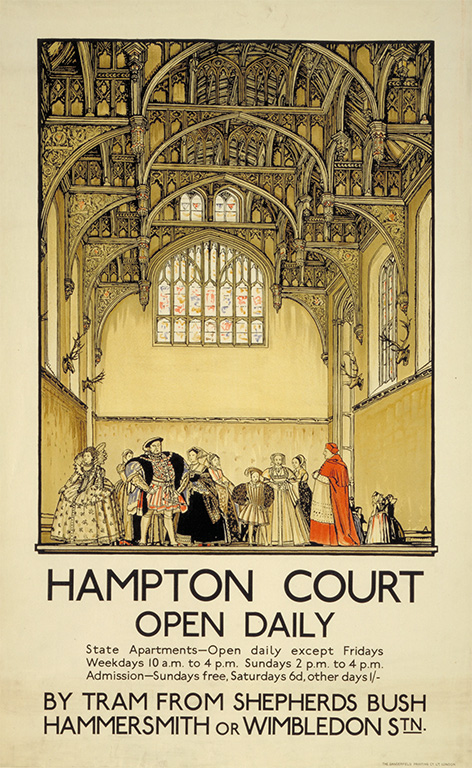Thomas Wolsey
Thomas Wolsey (1473-1530) was educated in Ipswich and then at Magdalen College Oxford. He was Henry VIII’s chief minister, a Papal cardinal, and a central figure in European politics until his spectacular fall from power in the late 1520s.
Portrait of Wolsey by Sampson Strong, 1610
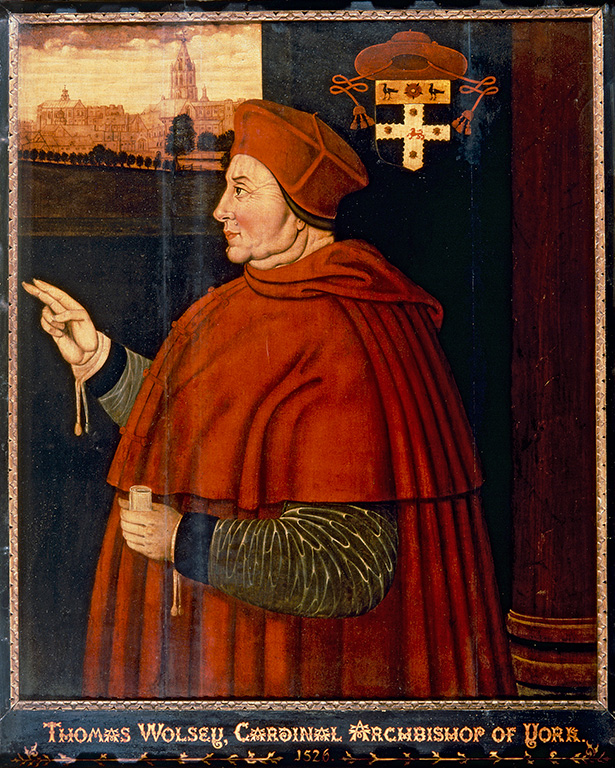
Cardinal's hat
Pope Leo X appointed Wolsey a cardinal in 1515. This red felt and silk cardinal’s galero was perhaps received from Pope Leo X and then presented to Wolsey at a mass in Westminster Abbey in November 1518. It was given to Christ Church in the late nineteenth century.
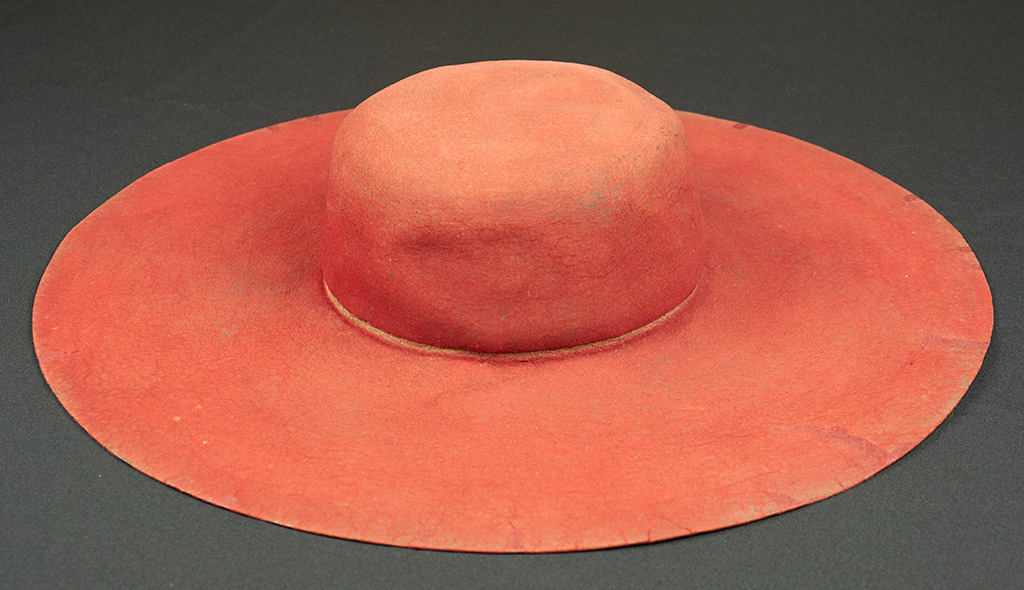
The Foundation of Cardinal College
Wolsey was a great benefactor to Oxford University and a strong supporter of education. In 1525 he suppressed St Frideswide's Priory in Oxford and founded Cardinal College on its lands, using funds from the dissolution of Wallingford Priory and other minor priories. He established two sister houses at Ipswich and Oxford, both of them ostentatiously named ‘Cardinal College’.
Detail of a page from Wolsey’s Epistle Lectionary, 1528, Christ Church MS 101
Epistle to be read on February 12, in memory of the translation of the relics of St Frideswide. From Wolsey’s Epistle Lectionary, 1528.
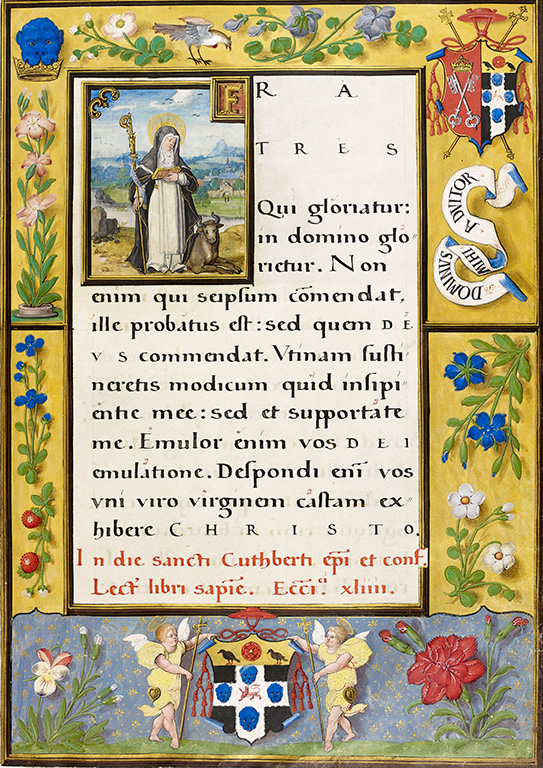
The foundation stone of Cardinal College Oxford was laid on 15 July 1525.
Wolsey envisaged that Cardinal College would concentrate on the humanist teachings already adopted by Magdalen and Corpus Christi colleges, and would take its undergraduates from new grammar schools founded in each of the English dioceses. Theology and scripture were still to be at the heart of the curriculum, supplemented with the teaching of Latin, Greek, and philosophy.
John Speed’s map of Oxford, 1605
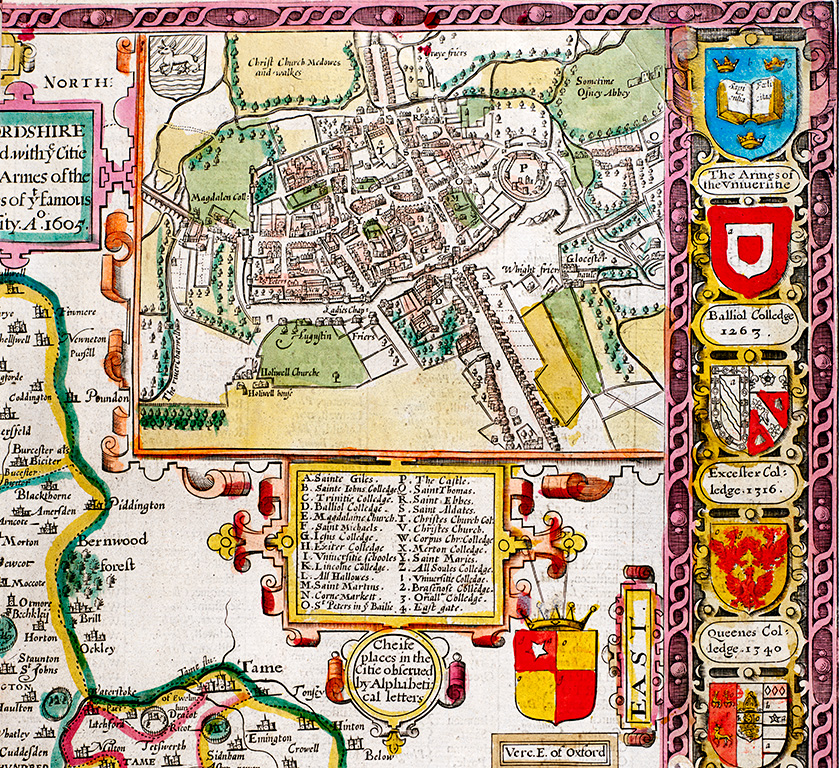
Wolsey recruited distinguished scholars and teachers, reinforcing his vision of an institution that would surpass Oxford’s existing colleges.
Cardinal College was to be a magnificent foundation for a dean and subdean, sixty canons (the graduate fellows), forty petty canons (undergraduates following the arts course) and six public lecturers, along with a collegiate establishment of thirteen priests, twelve clerks, sixteen choristers and a music master.
James Gilpin’s lists of the canons of Cardinal College, King Henry VIII College, and Christ Church, c. 1750
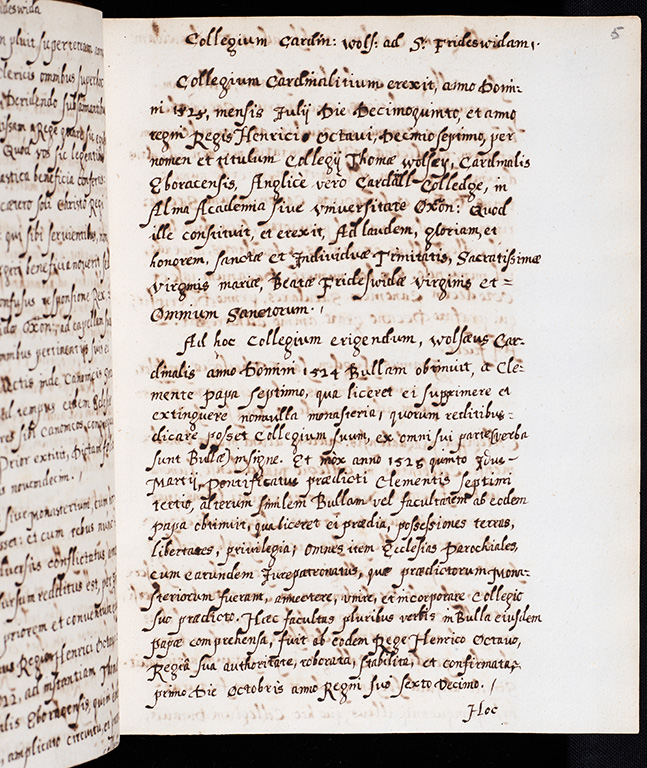
The first dean of Christ Church was John Higden. Higden was elected a fellow of Magdalen College in 1495, and became its president in 1516.
By 1528, construction of Cardinal College was well underway, including a grand chapel and extensive accommodation for scholars.
Amadas’ list of plate created for Cardinal College, 1528
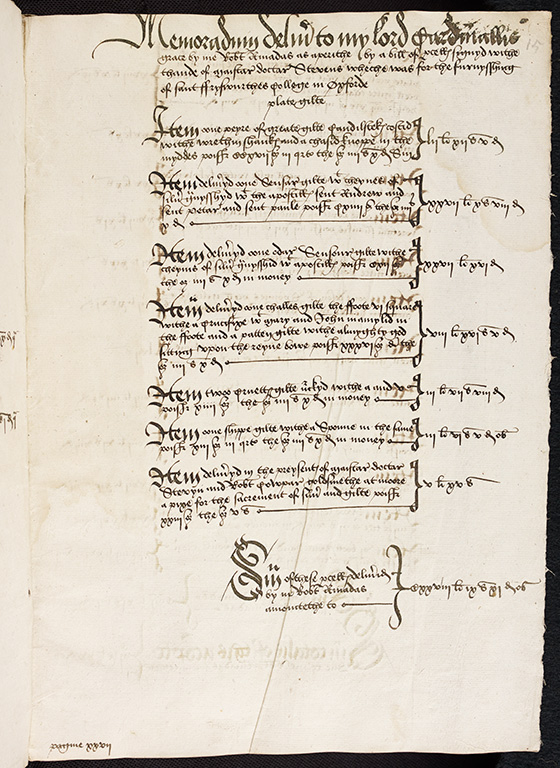
The Statutes of Cardinal College, with Wolsey’s seal, 1525
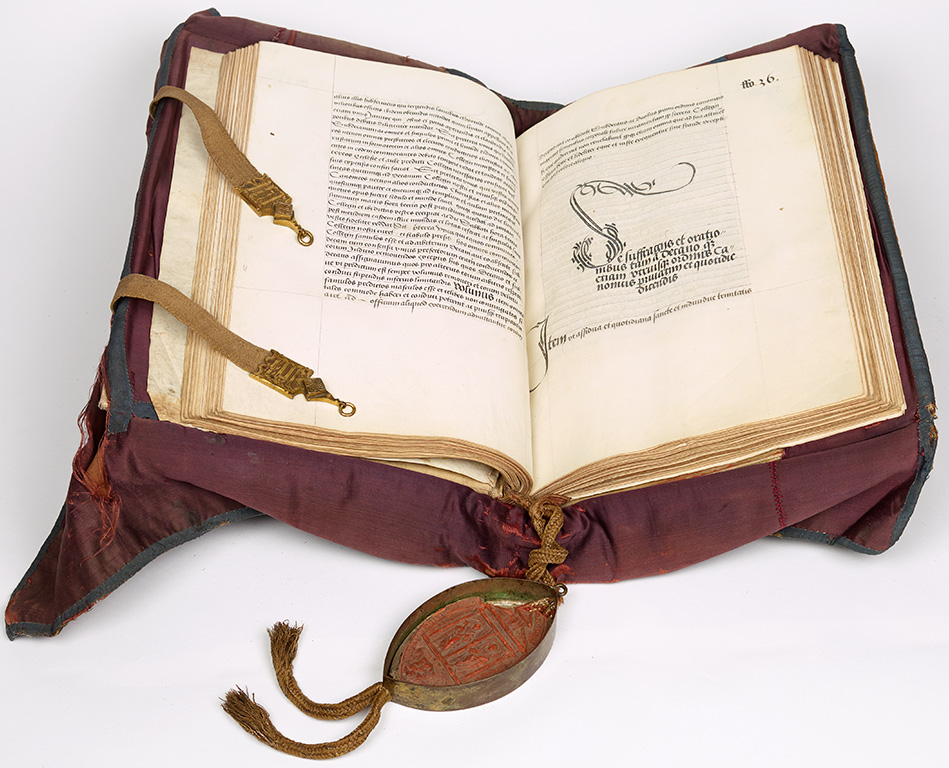
Setting of Dum transisset sabbatum by John Taverner
Setting of Dum transisset sabbatum by John Taverner (c.1490—1545), the first Informator Choristarum of Cardinal College.
There has been a choir at the cathedral since 1526, when John Taverner was the organist and also master of the choristers.
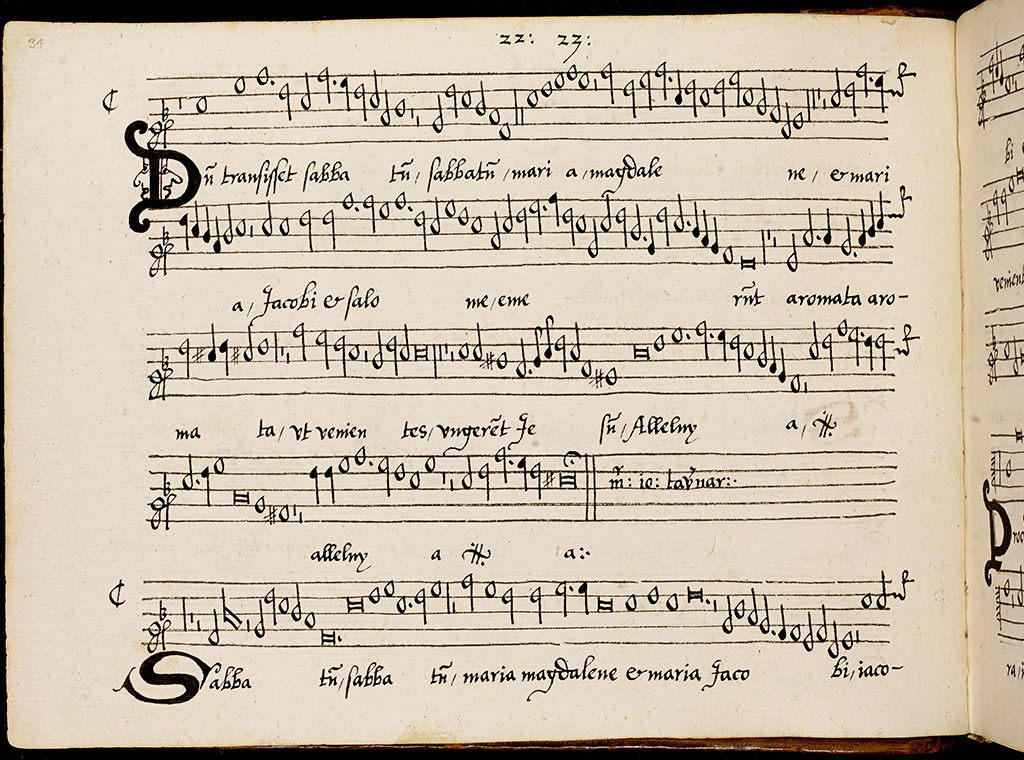
Wolsey’s Fall
When Wolsey fell from power in 1529, he left his magnificent scheme unfinished: only the footings of the new chapel were in the ground and the existing church of St Frideswide became the chapel of the new college, although the west end of the nave of the church had already been demolished.
After Wolsey’s fall in 1529, Henry VIII established King Henry VIII’s College and then, in 1546, Christ Church as both a college of the University and the cathedral for the diocese of Oxford.
Hampton Court Palace, 1928, from the London Transport Museum collection
The Great Hall of Hampton Court Palace from a 1928 poster of the interior of was designed by the artist and printmaker Robert Sargent Austin. Wolsey spent lavishly and built palaces at York House (Whitehall) and Hampton Court. Wolsey spent huge sums on the building of the palace and on its furnishings and by the 1520s it was one of the most splendid buildings in the country.
Only four years after its initial completion, Henry VIII assumed occupancy and began a process of rebuilding and remodelling.
Image © TfL from the London Transport Museum collection
